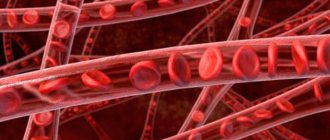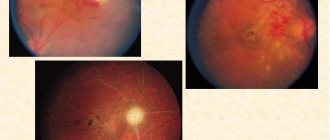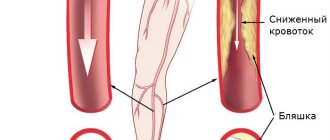Let's continue to debunk all sorts of pseudo-scientific rumors around HIV. With modern access to any information, many people continue to be distrustful and wary of everything related to this infection.
Why is it easier to become infected with the human immunodeficiency virus by practicing anal sex, and what number of sexual contacts is sufficient for infection, for what period of time a needle left by a patient after an injection is considered contagious, and how high is the risk of infection during a fight.
HIV and AIDS are the same thing
HIV and AIDS - is there a difference and how do they differ? People began to actively talk about AIDS in the mid-80s of the last century. And a specific abbreviation meant disease. The human immunodeficiency virus was discovered in 1983. In modern society, the disease is usually called HIV infection, and AIDS is the final phase of HIV.
HIV is a disease, and any interpretation that there is actually no virus is a myth. Modern medicine has an extensive information base about AIDS. The virus is easily isolated, can be studied, and its structure can be easily examined under an electron microscope. Since the structure of the virus is well recognized, a spectrum of antiretroviral drugs has been developed, which include antigens and enzymes to maintain the body's protective functions.
Top article: Types, symptoms, first signs and treatment of sexually transmitted diseases
Symptoms of AIDS in women and men, its treatment and prevention
In women, the symptoms of AIDS differ from those in men. As a rule, HIV in women manifests itself as vaginal diseases and disorders of the genitourinary system, for example, relapses of candidiasis (thrush). Herpes may worsen, and ulcers and warts appear on the mucous membranes of the genital organs. Regardless of the time of day or season, a woman experiences symptoms of fever with profuse sweating.
note
A characteristic symptom of AIDS is loss of appetite and weight loss, an irresistible desire to sleep due to a constant feeling of fatigue.
Analyzes
Express analysis Where you can get it for free Test in a pharmacy How to donate blood for HIV
Symptoms of AIDS in men are disguised as FLU: the temperature rises, the person experiences chills, headaches of varying intensity. A rash appears on the skin, and skin discoloration occurs in some areas. Lymph nodes in the neck, groin area and under the armpits enlarge and become hard to the touch, but not painful.
Appetite disappears, weight decreases and the person constantly feels tired. This acute period lasts about two weeks, and then the symptoms disappear for several months or even years. This is misleading and the man continues to live his normal life, allowing the virus to continue to destroy the immune system. When the last stage of the disease occurs in a man, all chronic infectious diseases become aggravated.
Important
HIV may not show symptoms for a long time if a man's immune system is strong. However, the rash appears within 2 weeks after infection.
Treatment of AIDS symptoms in the initial stages is possible with the help of antiviral drugs. However, over time, the immunodeficiency virus gets used to antiviral drugs and therapy becomes ineffective.
Increasing the dose of drugs only leads to an overdose and increased side effects. AIDS cannot be cured, but at some stage antiviral medications have the effect of stabilizing the symptoms of the disease. To strengthen the immune system when treating AIDS symptoms, homeopathic medicines are used to help the body resist secondary infection. To strengthen the immune system, immunomodulators and immunosubstitutes are used. However, when treating AIDS, it is necessary to select truly effective drugs that provide not only a psychological effect, since one’s own immunity gradually weakens.
In addition, when using immunomodulators, it is necessary to take into account that these drugs are not harmless, since an overdose can have the opposite effect, which is doubly dangerous in case of AIDS. Therefore, doctors carry out therapy with immunomodulators in cycles. Humanity has not yet learned to treat HIV and AIDS, but modern medicine can preserve the virus in a state of sluggish disease, so it is important to diagnose the virus in a timely manner and begin to suppress its symptoms.
Prevention of HIV and AIDS
The best treatment is to avoid getting AIDS. The largest percentage of infection occurs during sexual intercourse, since the mucous membranes and urethra have a high degree of permeability to the virus. Those who practice anal intercourse are at great risk, since the intestinal walls are very vulnerable.
According to WHO, 75% of those infected are homosexuals and women who have anal sex with men. Avoiding anal intercourse reduces the risk of HIV infection. Since the virus also enters the body through the blood, you should not take risks and visit dubious tattoo parlors, random dental clinics, or manicure salons, where the technology for processing instruments is violated.
It is necessary to get tested regularly if your sexual partners change frequently. The household route of transmission of AIDS is practically excluded, since the virus is quickly destroyed in the external environment. However, when using a razor and personal hygiene items, infection is possible. Therefore, you should not use other people’s objects in a hostel environment.
Human immunodeficiency virus drugs shorten life
It should be remembered that anti-HIV drugs completely block the development cycle of the virus. There are several drug groups that are recommended to be combined. Those infected with HIV are able to live a normal life for a long time, however, the terminal phase cannot be avoided. But this does not mean that death will occur in 5 years. The drugs are toxic, have many side effects, and for some patients they are so intolerable that some will have to be completely taken off the course, but you can’t give up all of them. Without receiving any therapy, the body will rely only on its own resources.
People who contracted HIV sexually and do not have drug addiction note that the disease progresses more slowly - 5, 10, 15 years. When taking medications, the period can increase to 20 years. The situation is completely different for those who contracted HIV through drug use and continue to use them. Such patients are given up to 2-3 years of life. The drugs will inhibit the disease process without affecting life expectancy.
HIV-infected people often ask whether they will die of AIDS before they reach retirement age. In old age, you can die from an age-appropriate pathology. Moreover, HIV treatment is considered the most effective way to extend your life until retirement age.
Top article: What tests for STIs exist - description and preparation
What should patients who are not taking treatment be wary of?
The greatest threat to residents of post-Soviet countries is tuberculosis, and not only of the pulmonary form. It is the main cause of death of HIV patients. Pneumocystis pneumonia, which is not typical for a healthy person, poses a mortal danger. The causative agent is the pathogenic fungus pneumocystis, which causes increasing shortness of breath, leading to pulmonary edema as a result of respiratory failure.
Toxoplasma is another of the most insidious pathogens that affects the brain and leads to severe damage to the nervous system. Cats are carriers of Toxoplasma. Healthy people do not become clinically ill when exposed to the microorganism, while an HIV patient will die from Toxoplasma.
Treatment methods
An effective drug for a complete cure for this disease has not yet been created. However, there are many effective medications that reduce the viral load and improve the quality of life of patients with HIV. If the recommendations for taking them are strictly followed, an increase in CD4 cells is observed and a minimum HIV titer is recorded with the most sensitive diagnostic methods.
This result is easy to achieve with developed self-discipline of the patient: timely and continuous use of medications, compliance with the correct dosage.
Main directions of therapy:
- Preserving the quality of life of HIV-infected people;
- Prevention and temporary delay of conditions that threaten the patient’s life;
- Achieving remission with HAART and prevention of secondary infections;
- Practical and psychological support for patients;
- Providing free medicines.
Principles for prescribing HAART according to disease stages:
- At the first stage, no treatment is carried out; in case of contact with HIV, chemoprophylaxis is carried out;
- In the second stage, treatment is carried out depending on the existing level of CD4 lymphocytes;
- At the third stage, HAART is prescribed if the patient actively wishes or if the RNA level exceeds 10 thousand copies and if the CD4 lymphocyte level is less than 200 CD4/mm3;
- At the fourth stage, treatment is prescribed when the RNA level is more than 100 thousand copies and the CD4 lymphocyte level is less than 200 CD4/mm3;
- The fifth stage is always accompanied by treatment.
Current HIV treatment standards may change based on recent research suggesting that early initiation of HAART leads to better outcomes.
Currently, therapy includes a combination of the following groups of drugs:
- HIV protease inhibitors,
- Nucleoside HIV reverse transcriptase inhibitors,
- Non-nucleoside HIV reverse transcriptase inhibitors.
There is evidence of the development of a new drug for the treatment of HIV infection, Quad, which is more effective and has fewer side effects. The drug is taken once a day and replaces several medications.
Find out more: Treatment of HIV infection (antiretroviral therapy)
Transmission of infection from mother to child during childbirth
Many women experience a “vertical” method of HIV infection during childbirth. However, there is a danger to the embryo only during natural birth, when the baby is forced into contact with the mother’s birth canal and swallows amniotic fluid. To avoid infection of the fetus during gestation, all women are tested for HIV. Tests are taken twice, since the virus can manifest itself at different stages of gestation. If HIV is confirmed, natural childbirth is replaced by cesarean section.
As soon as the baby is born, he is given a chemotherapy drug for preventive purposes. Also during lactation, mother's milk is replaced with adapted milk formulas. By following all preventive measures, you can avoid infection of your child. Women with HIV give birth to absolutely healthy children who do not lag behind their peers in development.
Is it worth introducing toxic drugs to the baby, assuming he is infected from the mother? It will be possible to find out whether HIV infection has been transmitted to a newborn only after a year of his life. Therefore, most doctors are inclined to believe that it is necessary to take medications. Today, there are numerous examples of people born in the mid-90s of the last century from HIV-infected women. They develop at the same level as children their age, living normal lives without serious health complications.
Top article: How to avoid thrush during pregnancy: treatment by trimester, folk remedies for candidiasis
Is it possible to become infected through household means?
Today we can tell the public with complete confidence that it is almost impossible to become infected with HIV through personal contact. Infected people can visit public places and come into contact with common objects. Also, do not be afraid of blood-sucking insects - they do not have the ability to store the virus within themselves and transmit it through a bite.
To catch the virus in a sauna or swimming pool, you need to have deep cuts to the skin and be wary of infected visitors: women with menstrual flow, and men who have sperm residue on their bodies. Once in water, the virus does not live long, and with urine and feces it has no ability to become infected. Virus cells are contained in secreted sweat, feces, and tears, but it is impossible for a healthy person to become infected from contact with these secretions, even in cases where tears get into an open wound.
It is almost impossible to become infected through household contact.
There is no chance of contracting HIV from saliva from a bite that draws blood from an infected person. For infection to occur, blood must enter the bloodstream and the bite must be deeper, like that of a predatory animal. When healthy children play with shared toys, sleep in the same room, sit on the same potty, and share towels with those infected with HIV, household transmission is excluded.
Many people think about how likely it is to get infected when getting cuts in hairdressing salons. Suspiciousness bordering on fantasy. The probability of infection is very low, but the chances of contracting viral hepatitis (B or C) are much greater.
Top article: How can you become infected with a sexually transmitted infection through personal contact?
How can you get infected with AIDS: 4 options for catching the infection
How you can become infected with AIDS: 4 options for “catching” the disease + 8 situations when this is impossible + 5 interesting facts + 7 public people who admitted their diagnosis.
After a chic night with an equally chic blonde whom you met while dancing Gangnam Style in a nightclub, you, as an adult and “mega-responsible” person, are wondering how you can get AIDS and rushing around the apartment in a panic?
Or even worse, reading about the symptoms of the disease on the Internet, nervously swallowing your saliva?
Calmly! Now we will tell you everything!
Infection is possible after one sexual intercourse
Sexual intercourse between an infected man and a healthy woman without the use of protective equipment, as well as HIV medications, can lead to infection of the woman from the first contact, since the sperm of such a man contains a high concentration of the virus. An infected woman who does not take HIV-controlling drugs can, in turn, infect a healthy man during the first sexual intercourse, since the concentration of the virus is too high in vaginal secretions. However, such cases are quite rare.
Most often, HIV through sexual contact occurs during a period of long-term sexual relationships, alternating between partners without personal protective equipment. If sexual contacts are rare, then chance decides everything.
Does a condom protect against pathology?
There is a popular belief that a condom is not capable of 100% protecting partners from HIV infection. However, to date no other types of protection have been developed. By and large, you cannot get HIV through a condom.
In European countries, doctors are attempting to administer chemotherapy to healthy partners with weakened immune systems who are at risk. A healthy person will have to take HIV medication in the same dosages as a carrier of the infection to maintain the required concentration of antibodies in the blood.
Is anal sex safer than vaginal sex?
The risk of contracting HIV through anal sex is quite high. As you know, the disease came to the world from African countries from gay men practicing anal sex. On the mucous membrane of the walls of the large intestine there are cells that are most susceptible to infection by the virus.
It is important to know. For heterosexual couples, the risk of contracting HIV through anal sex is significantly higher than through vaginal sex.
The risk of contracting HIV through oral sex is minimal. Passing through the mucous membranes of the digestive tract, the virus has no chance of survival. Once in the stomach, it dies under the influence of hydrochloric acid. But there is no need to relax. If there are ulcers, erosions, or damaged teeth in the oral cavity, direct contact of the infected sperm with the blood of the partner is possible. Hydrochloric acid neutralizes virus cells, so the fecal-oral route of infection is excluded.
Prevention of HIV infection
A common route of HIV infection in our country is intravenous drug use. It is absurd to talk about prevention for drug addicts, however, the use of sterilized needles, syringes, and utensils for making solutions for intravenous injections will protect at least from AIDS.
There have been recorded cases of children in the sandbox pricking themselves with used infected syringes. Infection, thank God, did not occur, but young mothers should remember this danger.
Theoretically, you can become infected with HIV when you get an injection, vaccination, piercing, ear piercing, or tattoo. Do not hesitate to inquire about the sterility of equipment in a medical, dental, or beauty salon.
The risk of transmitting HIV infection to a child from an infected mother is reduced to 2–6 percent by taking a course of ART (antiretroviral therapy) during pregnancy..
The baby, naturally, should be transferred to artificial feeding.
Any unprotected penetrative sexual contact is really dangerous, especially homosexual - due to the abundant blood supply to the rectum. During heterosexual intercourse, you need to know that the virus is “more readily” transmitted from man to woman than vice versa: its concentration in semen is much higher than in vaginal discharge. The risk of infection increases during menstruation.
The likelihood of infection is significantly reduced by using a condom (even oral condoms are sold in pharmacies). But where is the guarantee that it will not break? So the best HIV prevention measure remains avoiding casual sex.
And at the same time from drugs.
Infection through blood transfusion
All donors are required to undergo HIV testing. The blood of people who are carriers of the virus will never be accepted into the blood bank. All instruments are sterile and intended for single use. Reusable instruments undergo high heat treatment by autoclaving. Therefore, HIV infection during injection occurred only due to the negligence of medical staff. Today, reusable syringes are practically not used.
Worth knowing. The stability of the virus in the environment is extremely low. If all preventive measures are followed, there is no chance of infection.
Blood collected from donors is not quarantined for six months and is not used for transfusion. Six months later, the donor comes for re-testing. If the result is positive for HIV, the frozen blood is completely discarded.
Top article: How HIV infection is transmitted in infographics
The infection is detected one day after infection
Going the next day for testing after suspected infection is pointless. The incubation period for HIV is longer than for influenza or hepatitis. The study is aimed at identifying antibodies that will appear in the blood from two weeks to six months. The average period is 2-3 months.
You will have to donate blood for analysis twice with an interval of six months. If you receive a negative test after two checks, no further research is needed - HIV has not been confirmed.
Are there people whose immunity will prevent infection?
Doctors testify to people who are unable to become infected with HIV. And the point here is not the strength of the immune system. The virus has specific receptors that attach it to identical receptors on healthy cells, infecting them in this way.
However, some lack receptor sensitivity. This is how you avoid infection. Although, it should be recognized that this is extremely rare in people who have genetic abnormalities that are unable to identify viruses.
How do you know if you are HIV positive?
This infection has its own stages of development and symptoms. If at least one of the symptoms occurs, no matter how much a person thinks that he is healthy, we can assume that the infection has overtaken him. Let us list the stages of development of the disease and the symptoms at each of them.
1. Incubation period. It can last from 20 to 90 days, very rarely up to a year. At this stage, the virus is actively multiplying, but the immune system has not yet responded to it, so the patient is unlikely to notice the symptoms. The incubation period ends either with the clinical course of acute HIV infection or with the penetration of HIV antibodies into the blood. The incubation period requires blood serum diagnostics to detect the virus (DNA particles or antigens).
2. First manifestations of infection. At the second stage, the body’s reactions to the virus already appear in the form of an immune reaction (production of specific antibodies) or a clinic of acute infection. At this stage, both men and women may have no symptoms at all, and serological diagnosis for antibodies to the virus may be the only sign that the infection exists and is rapidly developing. The course of clinical manifestations of the second stage occurs according to the type of acute HIV infection. An acute onset is observed in 60-90% of patients in the first 3 months after infection, often ahead of the formation of the body’s defense against HIV, that is, the production of antibodies. An acute infection, which has only the first pathologies, has a rather varied course. These include symptoms such as rashes (polymorphic) on the dermis and visible mucous membranes, pharyngitis, polylymphadenitis, diarrhea, linear syndrome, fever. In 9-13% of people, after infection, due to weakened immunity, other diseases develop, for example, pneumonia, herpes, tonsillitis, fungal infections.
3. Latency stage. Occurs after infection appears. It is characterized by a constant weakening of the immune system, and therefore an increase in immunodeficiency. At this stage, the death of immune cells occurs. As many of them die, the body compensates for them with intensive production. During this period, symptoms allow HIV to be detected using serological tests. Enlargement of several lymph nodes (not including the inguinal ones) from different groups, completely unrelated to each other, can be a clinical sign of infection. In this case, no other pathological changes are noted. The duration of the latent stage ranges from two to three years to twenty or more. Its average duration is six to seven years.
4. Secondary diseases. After a certain period of time, infections of bacterial, protozoal, and fungal origin occur, again due to the patient’s weak immunity. There are three periods of the stage depending on secondary diseases:
Secondary diseases that have developed in a patient in the terminal (last) stage of HIV infection become irreversible (AIDS), the patient can be treated as much as necessary, but the treatment will be ineffective, and death occurs after a couple of months. HIV can develop in quite a variety of ways; all stages and symptoms do not have to occur - the absence of certain clinical signs in both women and men is quite normal. The duration of the disease ranges from one month to twenty years, and depends on the individual clinical course.
Infection from a needle stick with infected blood
Blood fragments remain in hollow needles for several days. If you get an injection from such a needle, you can become infected. Contaminated needles placed in mailboxes for victims can be classified as informational “horror stories.”
An injection with an infection must be carried out while there is still fresh blood in the needle. In this way, they become infected with hepatitis and syphilis viruses, but not HIV.
How to block HIV infection? This is accessible information about methods of infection, and not to fall into the main risk group, namely:
- drug use;
- frequent sexual intercourse in the absence of barrier contraception;
- systematic sexual relations with priestesses of love.
The stability of your health depends entirely on your awareness and correct attitude towards a healthy lifestyle.
“Constant” values in sex and their impact on HIV transmission
In a recent post, we wrote about how specific treatment – ART – affects the transmission of HIV in everyday life. Namely, its effectiveness, measured in achieving or failing to achieve an undetectable viral load. Another article detailed the likelihood of HIV transmission through oral sex.
ART and viral load are a given that cannot be changed for a particular pair of lovers if they have already entered into a sexual relationship. These are constants, or “permanent” quantities.
But there is an equally important constant - the status of the sexual partner . Not HIV status, but which side of sex he is - the “receiving” or the “giving”. The receiving party is always in a more vulnerable position - it receives the virus along with biological fluid. We wrote here about how the concentration of the virus in biological fluid affects the likelihood of infection.
In addition to the “constant” ones that increase the likelihood of HIV transmission, there are also “variable” risk components.










